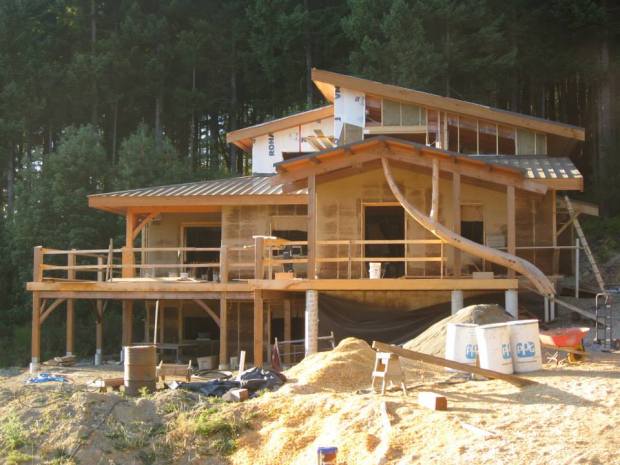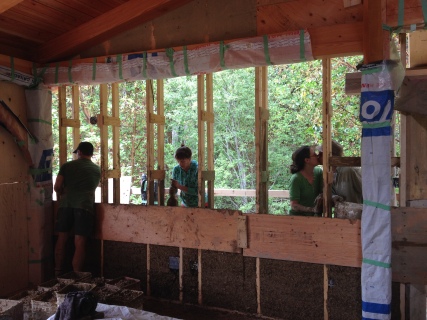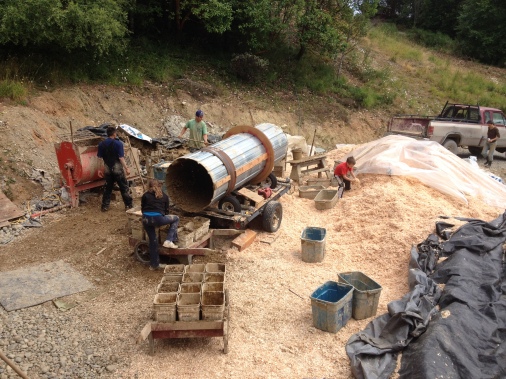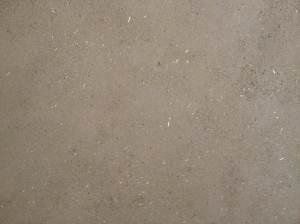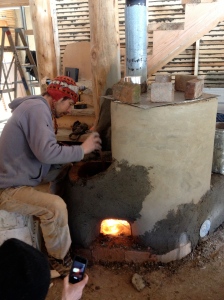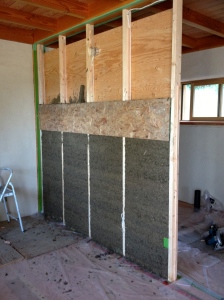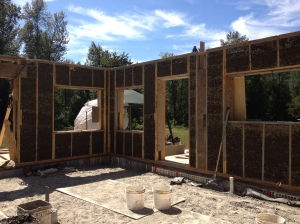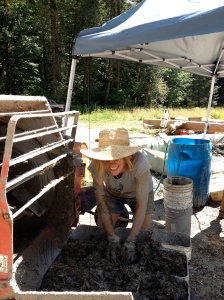This summer hailed the beginning of the chip & slip infill of Mark and Swarn’s house in Duncan, Vancouver Island. The house is a three story hybrid timber frame with light clay and conventional wall systems, natural earthen plasters, a masonry heater, and in-wall hydronics. It’s also 100% solar powered, and has a great grey/black water system that will be an epic permaculture garden one day. it also has a stunning view!
We kicked off the infill with a work party. I was totally amazed at how many people showed up! We had two mixers, a tumbler and a mortar mixer which was great because we needed a lot of mix for all those people! It also made me very happy to see that the majority of volunteers were women. And kids! Lots dirty, happy kids.
Presently we are working on the brown coat (a 1/2″ layer of clay, sand and straw) and when that’s all done we will be doing the finish plaster. Pretty excited about that part!
The house was designed by Chris and Ruth Hall, and carpentry is led by Noah and Jonas Huston of EModern Homes. Noah and Arael Peters cut and notched the timber frame, at the same location as my trailer house, so I got to hang out with them a lot this summer. The frame is amazing, lots of really beautiful clear fir. Looking forward to wrapping up this project by Christmas – fingers crossed!
